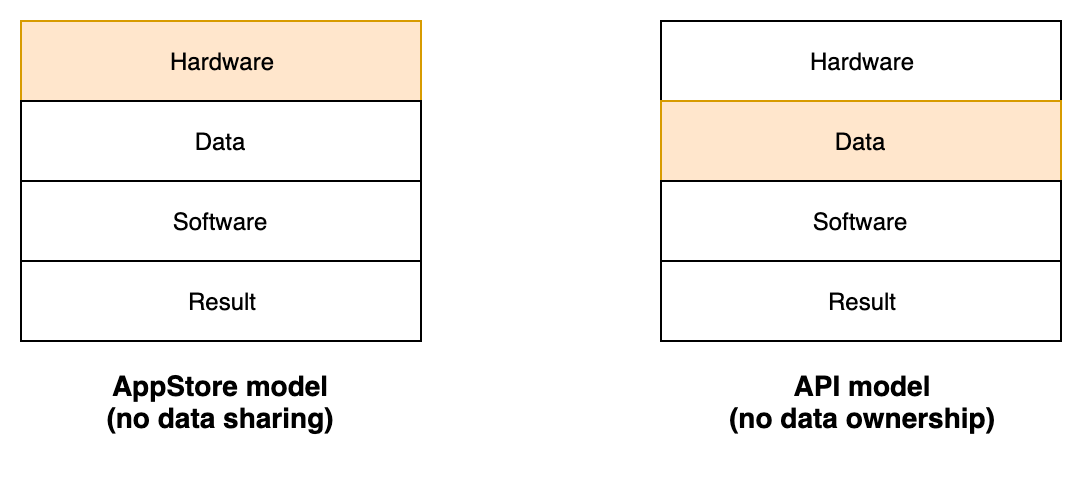This blog post describes concept that allows companies to build application ecosystems while retaining control over sensitive user data.
The idea of applications ecosystem or applications marketplace is very powerful and already adopted by multiple companies (such as Apple, Facebook, Twitter, etc). But it is not widely used in industries that operate on sensitive user data. This applies to finance, healthcare, government, manufactoring and transportation sectors. To some extent social networks fall into the same category as users get more and more concerned about data they accumulate.
App Store model
First, let’s see how application marketplaces work using Apple App Store as an example.
For better understanding we need to take a step back to see how software applications operate in general. At a high level in order to produce some meaningful output or end result we need three components:
- Hardware (computing resources)
- Data (input)
- Software (application code or algorithm)
In App Store model Apple provides access to hardware and allow 3rd party application developers provide data and software. This pattern applies to majority of apps. There are some exceptions where Apple shares some data with 3rd party apps (like user contacts) but that doesn’t change overall picture.
Same model is used by cloud infrastructure industry (AWS, Azure, Google Cloud, etc) because essentially they allow clients access hardware and use their own software to process/store their data. There are some layers on top of hardware (OS, databases, storage, messaging systems, etc) still data ownership is responsibility of the client not the platform.
API model
Social networks (like Facebook or Twitter) and many other companies use different approach to create platforms for 3rd party applications. Their main focus is on data sharing, so they use APIs to allow 3rd party apps access users’ data they accumulated. In this case hardware and software part become responsibility of application developers.
This model allows easy data sharing but doesn’t allow platform owner to retain data ownership. Essentially data is transferred to 3rd party apps and they are allowed to do anything they want (technically speaking).
We can summarize these two models using following conceptual diagram:

Domain platform model
Now let’s talk about model that allows to overcome limitations of above approaches.
Proposed model allows to build platforms (for application ecosystem) with data sharing features as well as guarantee of data ownership (which means platform owner controls data and produced end result).
The key part is that this platform provides hardware and data and allows app developers to provide software component(s). More importantly platform retains control over result (or output data) that will be presented to end user at some point.
Conceptual diagram for domain platform model:

The most important benefit is that adoption of domain platform model will prevent sensitive user data leaks via 3rd party apps ecosystem.
Implementation
Implementation of this platform requires development of new type of application containers that guarantees:
- specific data input/output conditions,
- code inside container doesn’t produce any side effects.
This is very similar to pure functions concept from functional programming:

More on this later, implementation deserves it’s own blog post(s).